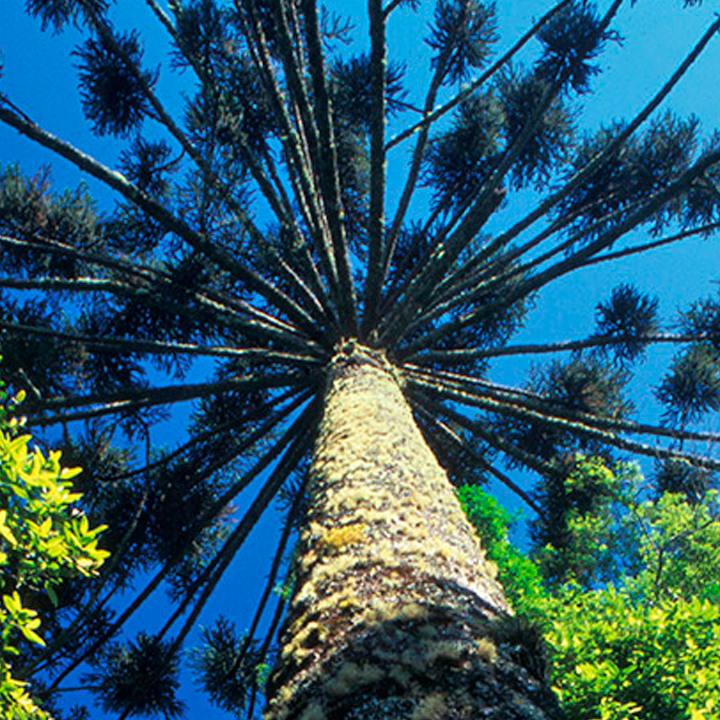
Paraná Pine (Araucaria angustifolia) Forests
The Atlantic Forest Great Reserve has many fragments of the symbolic ecosystem of southern Brazil – forests dominated by the timeless (since the Jurassic period, 200 million years ago) Paraná Pine. The Paraná Pine formation is well adapted to the southern winters with cold and occasional frosts, and is interspersed with many meadows and rocky fields. Paraná Pine forests are probably the most threatened plant formation within the Atlantic Forest, and is the primary habitat for the endangered Vinaceous-breasted Parrot (Amazona vinacea).
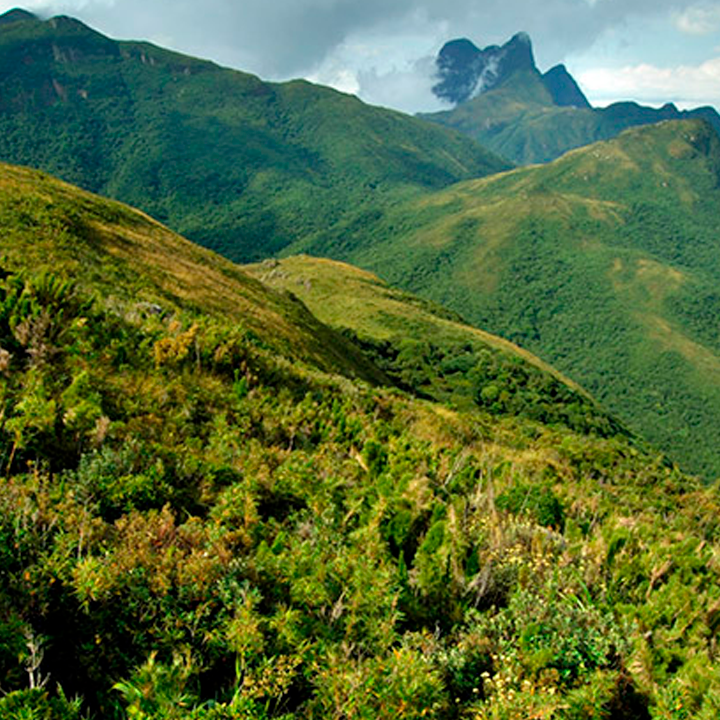
High-elevation Meadows and Cloud forests
Ecosystems of mountaintops, alpine meadows thrive under these rigorous conditions, with cold winters and strong winds that prevent the establishment of forests. However, these extreme conditions can fool us into thinking that only simple life is found here. Quite the contrary, and a wide diversity of grasses, small trees and shrubs are found here, many of which are endemic to this habitat type. Views from these places are often breath-taking and reward the intrepid mountain climbers for their efforts.
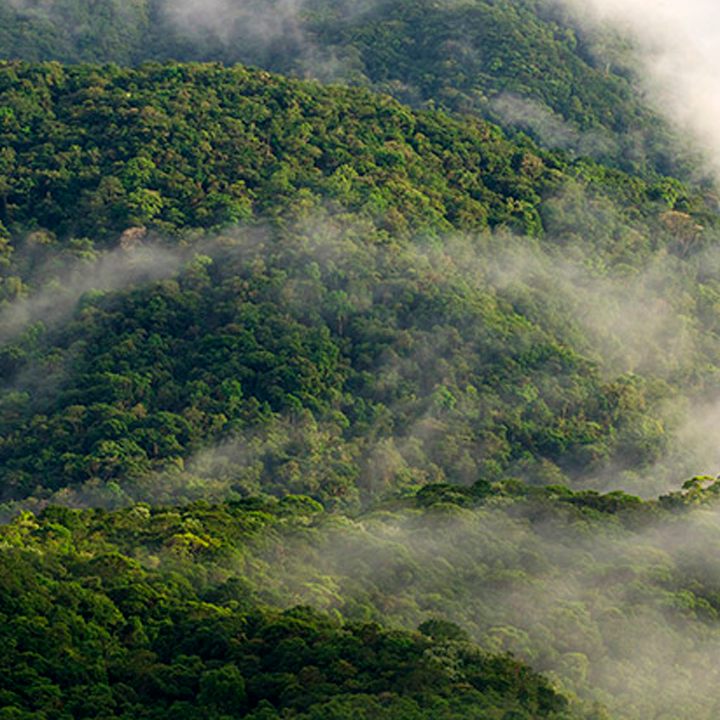
Montane Forests
Just beneath the level of the alpine meadows, slightly warmer temperatures, and protection from constant, often strong, winds, and an excess of rainfall, favors the forests found here. These forests, with smaller trees than found in the lowlands, are densely packed with bromeliads, epiphytic ferns, and orchids. It is here where we find the minuscule, brightly-colored saddleback toads (Brachycephalus ssp.), alongside the streams that begin here but finally provide water for the millions of people that live downhill.
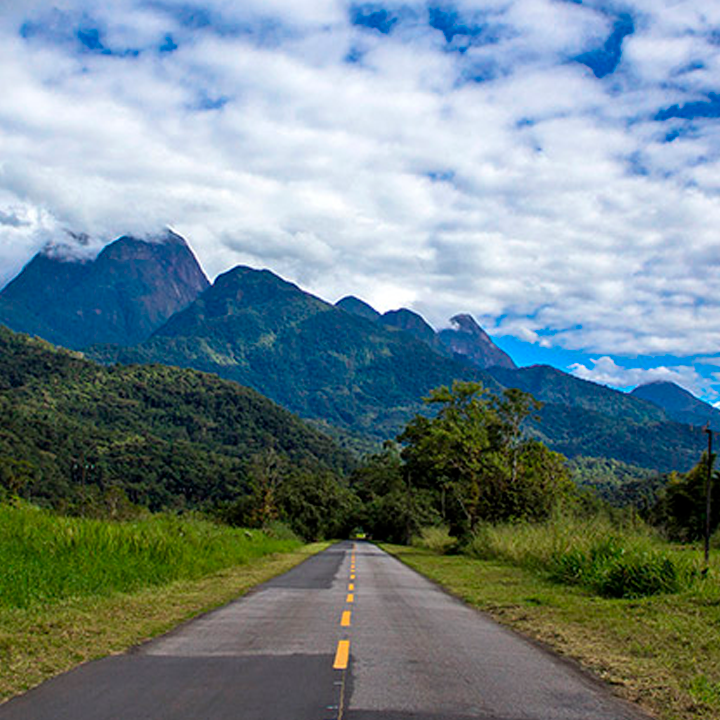
Low elevation and coastal forests
Below 800 m (2400 feet) elevation, as the mountainsides become less steep, and soils become richer and the copious rainfall keeps those soils moist, we find many very large trees whose canopies shade an amazing variety of habitats, along with the plants and animals that live there. These spectacular lowland forests are as impressive, but sometimes with greater diversity and abundance, as the Amazon Forest, attributed to the many species of birds and mammals that can be found in the lowland Atlantic Forest.
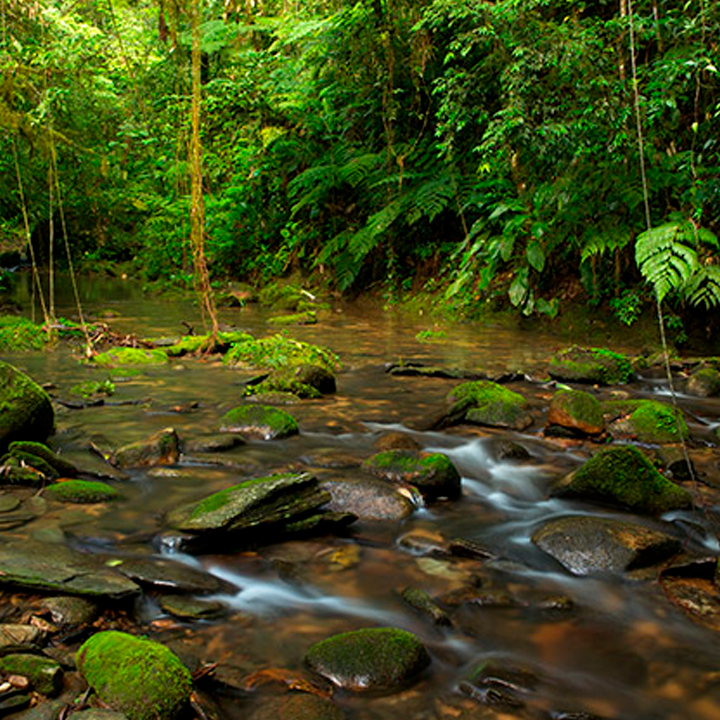
Rivers and Waterfalls
An uncountable number of rivers and streams, with many rapids and waterfalls, flow through The Atlantic Forest Great Reserve. While they bring life and beauty with them, they also provide a setting for many aquatic activities, including swimming, calm- and white-water rafting, and canoeing or kayaking, all refreshing in the cool waters, especially in the often-hot summers. These crystalline waters flow all year long because of the forest, and which provide drinking water to all the coastal communities of the region.
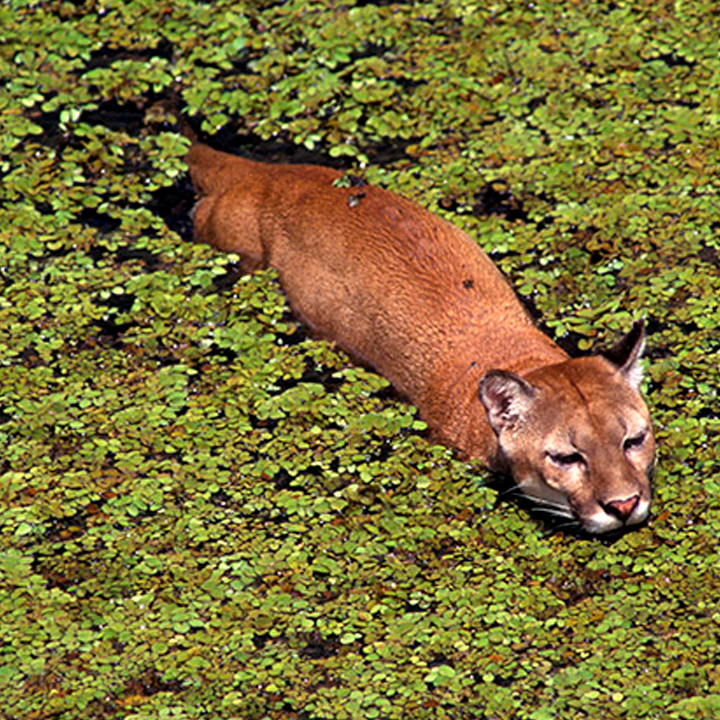
Marshes, Swamps and Lagoons
In the lowlands, as the waters slow their flow towards the sea, many marshes and swamps are formed, along with the many associated lagoons. These areas are very important for conservation because of the wide variety of life that is dependent on them, from frogs and reptiles to fish and all the birds that feed on them. In these marshes, one can find the endemic and endangered Paraná Antwren (locally known as the bicudinho-do-brejo, Formicivora acutirostris). These habitats also provide important ecosystem services, such as water purification and reservoirs of life.

Bays and Mangroves
Several large, estuarine bays can be found along the coast in this region. This is also where we find mangroves, where abundant fresh water from the mountains meets the salt waters of the ocean. Mangroves are very resilient trees whose roots are well-adapted to salt waters. Because of the nutritious sediments from the rivers, mangroves here are very productive and a nesting place for a wide variety of animals, from many oceanic fish species and crabs to birds and mammals. A boat ride in these bays often affords the traveler with views of bands of Scarlet Ibises, dolphins, and the endemic Red-tailed Parrots that we mentioned earlier.
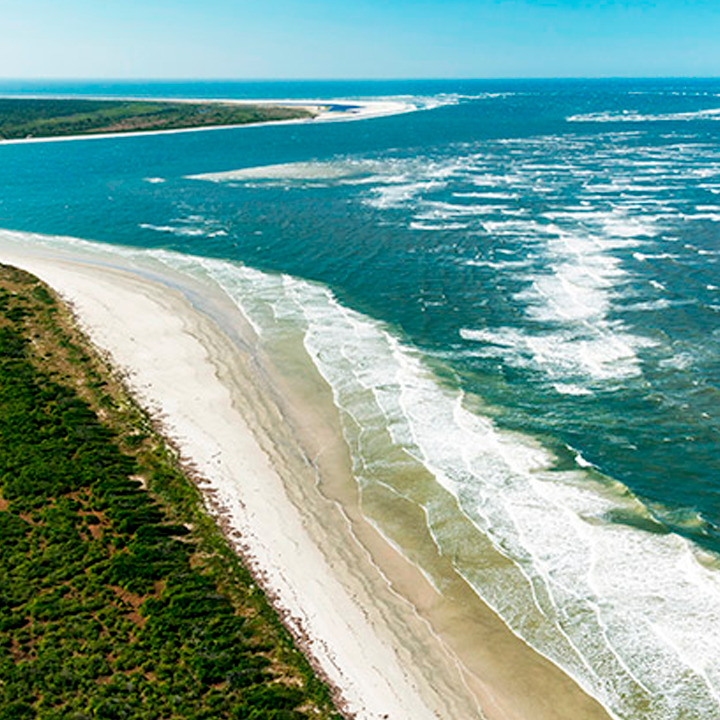
Restinga, Dunes and Beaches
You may recall that we defined restingas as thin forests that grow on sandy soils with marine influences. This is one of the most threatened of all ecosystems within the Atlantic Forest domain because the terrain is flat and suited for construction, and so this is where the coastal cities tend to spread. The ecotone (transition zone) between restinga and coastal plains forests is the preferred habitat of the endemic Black-faced Lion Tamarin. The sand dunes and beaches parallel the ocean and the beaches, with their own vegetation, provide habitats for a variety of native wildlife, as well as the many beaches that are favored vacationing spot for many Brazilians and international travelers. The sandy beaches also provide nesting habitat for the Green Sea Turtle.
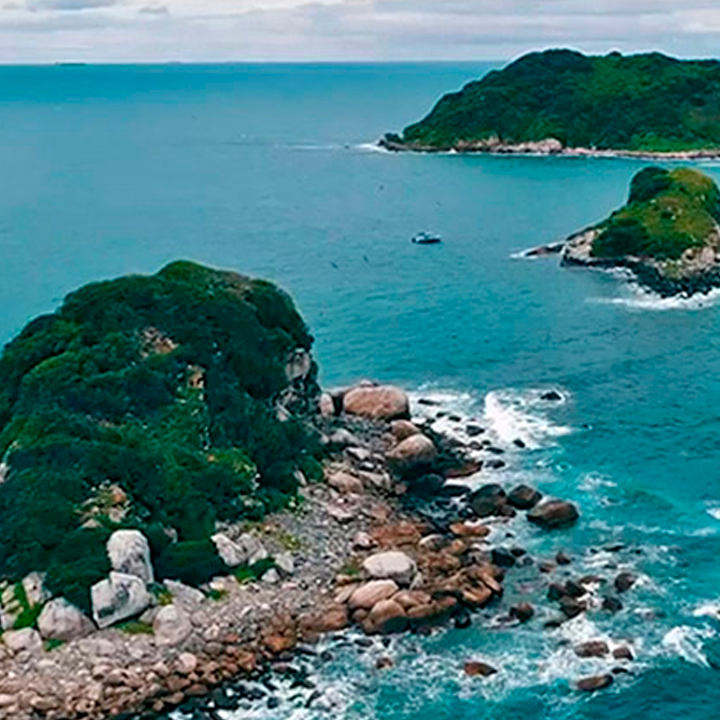
Oceanic Islands and the Ocean
The Atlantic Ocean here is very rich with life. The many rivers that feed into the ocean, along with the estuaries, lagoons, and bays, ensure that fish and other marine forms of life are abundant. Thus, sport fishing and scuba-diving are favored pastimes. The continental shelf here in The Atlantic Forest Great Reserve reaches around 50 m depth, with many small islands and archipelagos.





































